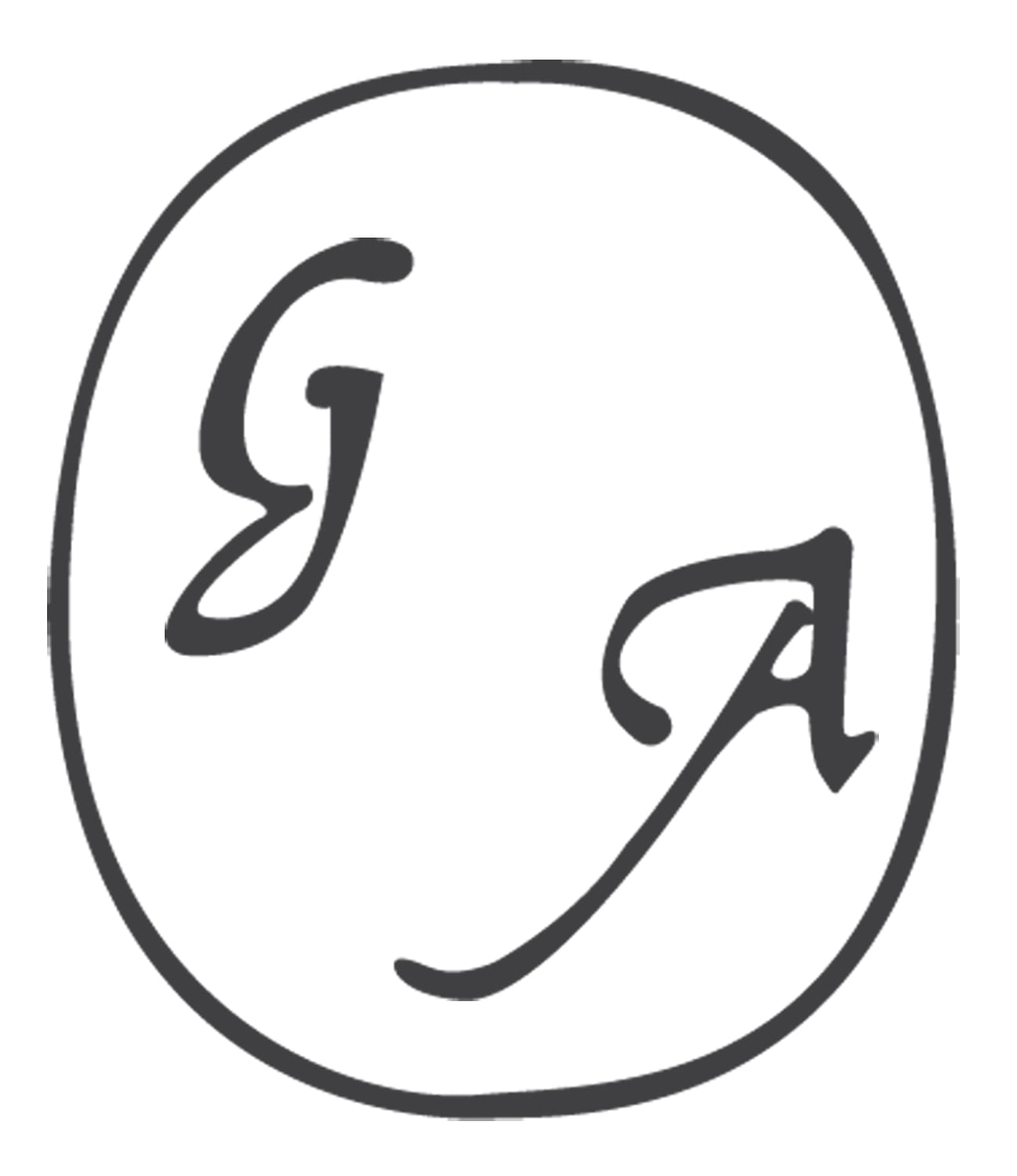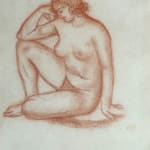



ARISTIDE MAILLOL French, 1861-1944
Study for 'The Thought' or 'The Mediterranean' / Etude pour 'la Pensee' ou 'La Méditerranée',, ca. 1905
Original Signed Sanguine Pastel Drawing on Montval Paper
31.5 x 26 cm. / 12.4 x 10.2 in.
This original drawing is signed with the artist's monogram 'M' at the lower left corner of the paper.
The work is also stamped with the Maillol studio stamp verso 'Atelier Aristide Maillol'. (Lugt 1777a)
This stamp was used mostly by Maillol's son, Lucien Maillol, to mark the drawings that were included in his father's studio after his death. The stamp is also numbered '738' and this refers to the artist's studio inventory number. According to the Frits Lugt archive of collectors and artist stamps, this stamp was used only on authentic works.
The paper bears the watermark "Maillol-Kessler".
Count Harry Kessler (1868 – 1937) was an Anglo-German count, diplomat, writer, and patron of modern art. He was Maillil patron from 1904 and the sculpture 'la Pensee' was commissioned by him.
He also built a private paper mill for Maillol in Monval where this paper was produced. The mill was run by Maillol nephew, Gaspard Maillol.
Provenance: This work is accompanied by a photo-expertise from Olivier Lorquin, the international expert for the works of Aristide Maillol, Paris, dated 20 September 2011 (expertise no. 2833)
Provenance
Private collection, France
Note: This drawing is a study for Maillol important sculpture 'la Pensee' also known as 'La Méditerranée'.
The sculpture was first created in 1905 and exhibited in the Salon d'automme of the same year.
The writer, André Gide wrote after seeing it for the first time : "Elle est belle, elle ne signifie rien" (She is beautiful, she means nothing).
The statue's beauty lies in its simplicity. Maillol's approach was the opposite of general practice at the time, which was still influenced by
Rodin. No excessive emotion, no straining muscles. The face is blank, the limbs are well rounded and the skin is smooth. Maillol modified his
statue until he achieved the ideal composition. The figure is a set of interlocking triangles, folded in on itself as if in thought. Only a
hand and a foot extend beyond the frame.
This simplification of sculpture after 1900 is referred to as the "return to order".
The Orsay museum in Paris owns two versions of this sculpture
Condition: Good condition. Light Foxing and Pinhole to the upper corners.
The work is also stamped with the Maillol studio stamp verso 'Atelier Aristide Maillol'. (Lugt 1777a)
This stamp was used mostly by Maillol's son, Lucien Maillol, to mark the drawings that were included in his father's studio after his death. The stamp is also numbered '738' and this refers to the artist's studio inventory number. According to the Frits Lugt archive of collectors and artist stamps, this stamp was used only on authentic works.
The paper bears the watermark "Maillol-Kessler".
Count Harry Kessler (1868 – 1937) was an Anglo-German count, diplomat, writer, and patron of modern art. He was Maillil patron from 1904 and the sculpture 'la Pensee' was commissioned by him.
He also built a private paper mill for Maillol in Monval where this paper was produced. The mill was run by Maillol nephew, Gaspard Maillol.
Provenance: This work is accompanied by a photo-expertise from Olivier Lorquin, the international expert for the works of Aristide Maillol, Paris, dated 20 September 2011 (expertise no. 2833)
Provenance
Private collection, France
Note: This drawing is a study for Maillol important sculpture 'la Pensee' also known as 'La Méditerranée'.
The sculpture was first created in 1905 and exhibited in the Salon d'automme of the same year.
The writer, André Gide wrote after seeing it for the first time : "Elle est belle, elle ne signifie rien" (She is beautiful, she means nothing).
The statue's beauty lies in its simplicity. Maillol's approach was the opposite of general practice at the time, which was still influenced by
Rodin. No excessive emotion, no straining muscles. The face is blank, the limbs are well rounded and the skin is smooth. Maillol modified his
statue until he achieved the ideal composition. The figure is a set of interlocking triangles, folded in on itself as if in thought. Only a
hand and a foot extend beyond the frame.
This simplification of sculpture after 1900 is referred to as the "return to order".
The Orsay museum in Paris owns two versions of this sculpture
Condition: Good condition. Light Foxing and Pinhole to the upper corners.
$ 8,000.00
Further images
2
of
2




